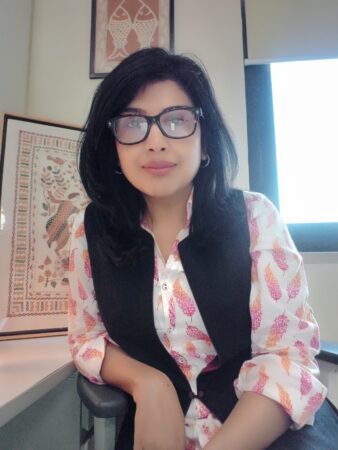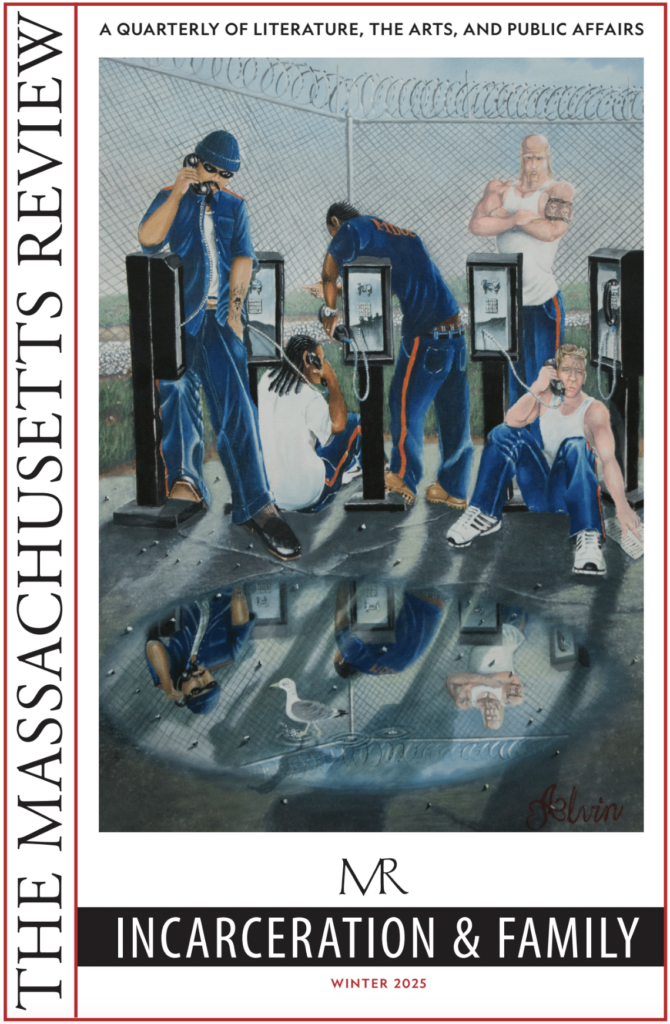10 Questions for Sumana Roy

“I have collected words for air in languages I know and want to know. Hawa, air, wind, foo, aire, breeze . . . I say the words consciously—to note how my mouth and its insides behave as I pronounce them. It opens, to let air in and out. Every morning I open my window and say the word “wind-ow.” It’s the space for wind to enter, as it does through my nose and mouth.”
—from Sumana Roy’s “Woven Air,” Volume 66, Issue 2 (Summer 2025)
Tell us about one of the first pieces you wrote.
I have no memory of this for two reasons: I had no intention of becoming a writer; I wasn’t writing with any degree of seriousness. The things one writes in school don’t count, of course. In my first year in college, my teacher Abhijit Majumdar, after reading a short story that I’d written for the college magazine, called me aside and said very gently, ‘I’m slightly worried about the volume of alliteration and assonance in your two-page story. You’ll have to be careful about that in your examination essays’. I was eighteen, and I might have blamed it on being forced to read Beowulf. Since I continue to think of everything I write as practice, I’d like to think of the essays I wrote to pass my college exams as the first things I wrote. Intoxicated by the furious spell of the glorious literary criticism of the twentieth century—up to the 1970s, for that was what was available in the little library in Siliguri College, where I studied—I would have written these essays like someone who was trying very hard to write like Cleanth Brooks, William Empson, Frank Kermode, David Daiches, and others.
What writer(s) or works have influenced the way you write now?
I did not grow up with a lot of books around me. There were no bookstores in our town, and, even if there had been, my parents, with their meagre salaries in socialist India, wouldn’t have been able to buy any for us. Nora Bansal, my English teacher in junior school, kept lending her children’s storybooks to me for years. Apart from those, as I grew older, I read a lot of sports writing—they became available to read in a magazine such as Sportsworld, which, besides having some excellent writers like Rohit Brijnath, also ran syndicated columns.
The first poet I came to love was John Donne, and soon enough that love had turned promiscuous—some of the British Romantics, even the Victorians, and, of course, the modernists. I read them by myself, studying every word with curiosity and wonder, and also in the company of literary critics who seemed to have the ability to make the poems even more beautiful to me. The five years in college and university passed by like this, reading writers on the syllabus, writing about them. They would have left their impress on me—those I liked, and also those I did not want to write like, such as the Neoclassical poets, for instance.
I had also, by this time, begun reading the writers who would change me—Amit Chaudhuri, whose first novel I discovered in the university library; Bibhutibhushan Bandyopadhyay, Jibanananda Das, Shakti Chattopadhyay, Manindra Gupta, Adwaita Mallabarman, and, as if I’d never heard of him before—Rabindranath Tagore. In discovering these writers, not just the language which they were constantly creating anew but their commitment to a revolutionary lifelovingness, to ananda, I would discover myself.
What did you want to be when you were young?
Many, many things. A cricketer, though I’ve always been quite bad at sports. Then a cricket commentator, for that seemed to be like the second-best thing (little did I know then that that was how critics had been seen in relation to writers and writing). A bus driver, since the bus service between Siliguri, my hometown, and Calcutta was called ‘Rocket’. That name was enough—that route of potholed highways immediately became an imagined version of outer space to me. A mason—I would stand beside the masons who worked at our house, building walls or repairing floors. I was entranced by how they would mix sand and cement and water, creating a temporary lake only to fill it a few minutes later—the spade was a more interesting tool than a painting brush. During the winter, when most of this work was done, I would spend the whole day watching them lay bricks—I was mesmerised: brick by brick, one beside each other, one above the other, slim gaps in between, where the glue of cement would be added. Neither my parents nor the masons allowed me to be their apprentice. A painter of walls—whitewashing lime and water, what joy in mixing them and dipping long brushes into this bubbling liquid to paint walls. These lives were denied to me, alas. I’ve become something I never had any dreams to be—I teach, I write.
What inspired you to write this piece?
This essay is a section that is part of a longer work in progress, where I’ve been trying to think of the relationship between the elements and our emotions, rasa. “Woven Air” is about looking at air and the wonder it generates, adbhuta rasa.
Is there a city or place, real or imagined, that influences your writing?
Northern Bengal, whose air and plants and people and light have raised me. From the foothills I would see or have a sense of some of the highest mountain peaks in the world—tourists came for these places, not places like ours, unremarkable in their imagination. Their lack of curiosity about lives and places like ours was a gift—we were free to remain ourselves for a long, long time, before corporatised globalisation destroyed small Indian towns like mine. The other gift from living that kind of life was the relative lack of attention—this, too, is freeing, and it helped me grow into a naturalised ethic of living and loving without the need to draw attention to oneself and what emerged out of me. What I perhaps mean is a kind of naturalised self—contentment in one’s limited perimeter, in one’s place, literal and figurative.
There are also the trees and the light, the sky. I am addicted to them. They are my home; I look for them everywhere, even in my writing—a life outside the heaviness of meaning. Maybe that is why I write, I don’t know.
Do you have any rituals or traditions that you do in order to write?
Time—that most fundamental of rituals. Maya-mashi, a refugee woman from Bangladesh who worked as domestic staff in our house in Siliguri, told me something when I was a child. Surrounded by the pieties of fasts and abstentions around us, I had asked her why she wasn’t fasting. I think I was nine. Her response has stayed with me—‘Every day I work very hard so that I don’t have to fast. Why should I fast when everything I am doing is for my stomach?’ I have a similar relationship with writing—to find the time to write after all the responsibilities I have is a gift and privilege. I am so greedy for that kind of time that I’ll take it, even if it doesn’t come gift-wrapped. I have no rituals—I’m writing inside myself quite often, even when I don’t have the opportunity to commit it to paper or my laptop. It’s like sleeping—I’ll sleep anywhere, if only I could get sleep, a little more sleep.
Who typically gets the first read of your work?
Since I began writing almost secretively, keeping it from family and friends, that gradually grew into a habit. I don’t show my writing to anyone—it feels like an imposition, a claim on their time. Occasionally—far less frequent than I used to before—I show it to my closest friend. After I have a draft that I can give myself the permission to share with the world, I send it to the editor of the magazine or journal I’m writing it for. For a book, in the last few years it has been Jennifer Banks and David Davidar.
If you could work in another art form what would it be?
Music? No, I wouldn’t even dare to imagine that I could sing. I do feel a kind of addiction to music, but I wouldn’t be able to create it. I can’t draw or paint, but have an instinct for assembling things in—I’ve been told—unexpected forms. Found Art—I became aware of Abanindranath Tagore’s Katum Kutum quite late in my life, years after I had started putting branches and twigs together into abstract forms. A few years ago—six, I think—I began drawing. It’s not art, anymore than my little niece’s drawings are art, but I’ve been imagining an alternative history of various things, including relationships, with the help of these drawings.
What are you working on currently?
A few things, not only because my attention is omnivorous, but from my need to distract myself from the more important thing at hand. It’s a survival skill, I now realise, to save myself from being committed singularly to something that might take years and whose incompletion might cause me boredom and sadness. At any given point of time, I will have half-written poems, essays and longer forms open on my laptop. I also love writing literary and cultural criticism—that’s another genre that inevitably finds its way into the response to a question such as this one.
I am superstitious—so you’ll notice that I’ve avoided answering your question. (Insert smiley)
What are you reading right now?
Much less than I would like to, love to. It’s summer break at the university where I teach. I’m reading for pleasure, though reading poems and essays by my students brings me a lot of joy as well. Around me, in various places in the house, are books left half-opened, their pages face down, as if in prayer. Old Ruskin, a book on Gaganendranath Tagore, Robert MacFarlane’s new book on rivers, a book on archery (don’t ask me why), another on the history of whistling, Christopher Rovee’s New Critical Nostalgia, Ritwik Ghatak’s Cinema and I.
SUMANA ROY is the author of two works of nonfiction, How I Became a Tree and Provincials; Plant Thinkers of Twentieth-Century Bengal, a work of literary criticism; Missing: A Novel; My Mother’s Lover and Other Stories; and two collections of poems, Out of Syllabus and VIP: Very Important Plant.



